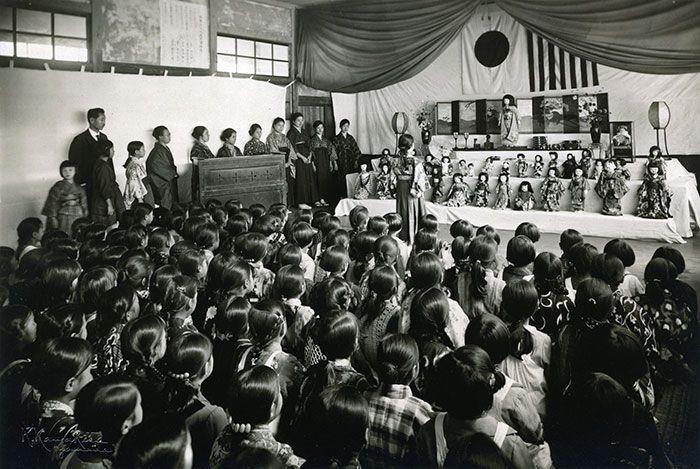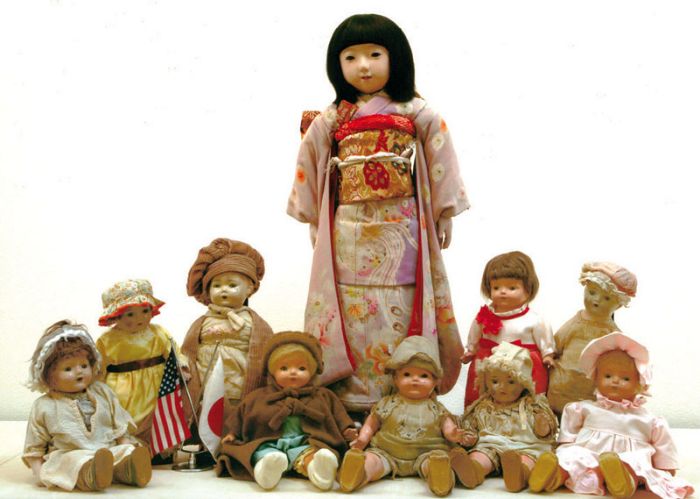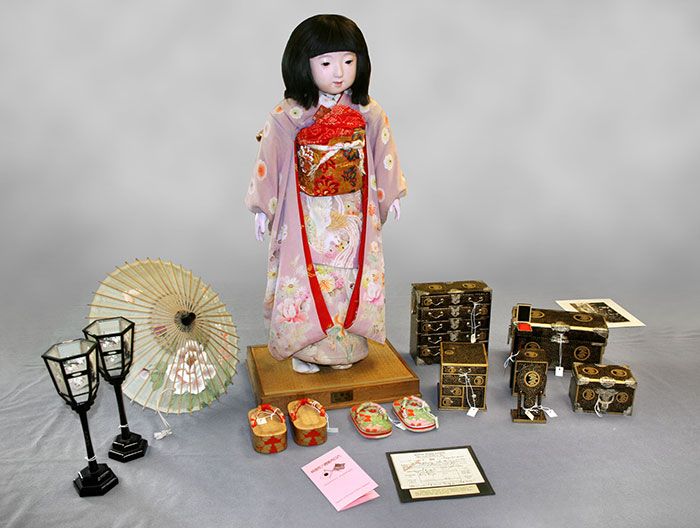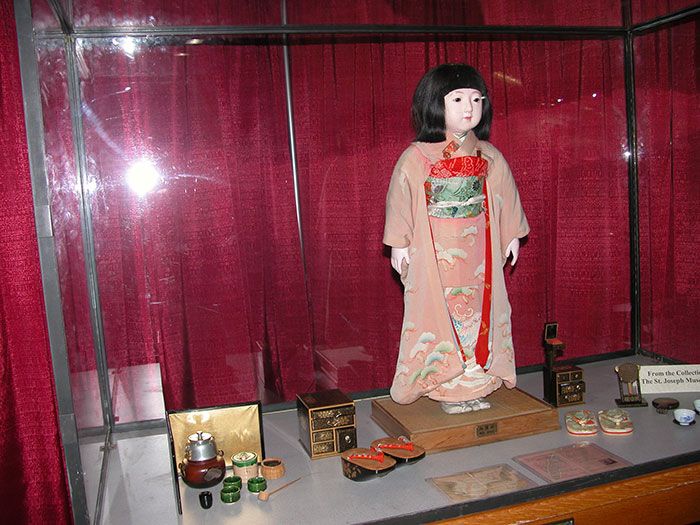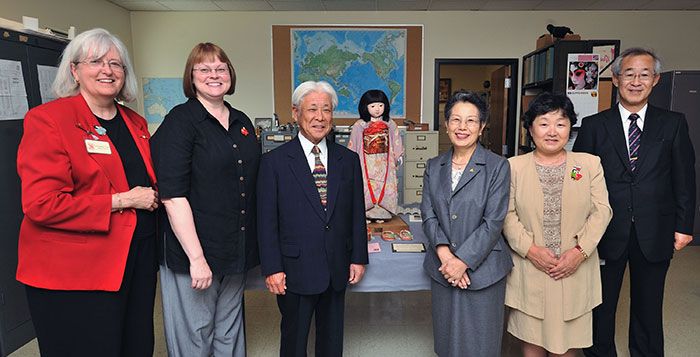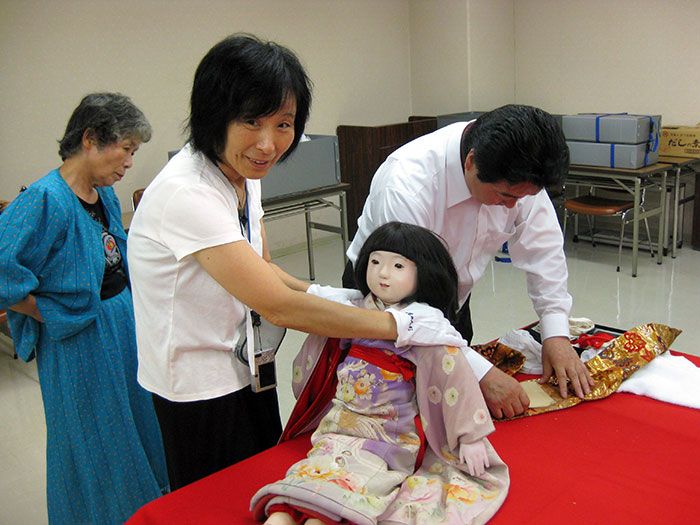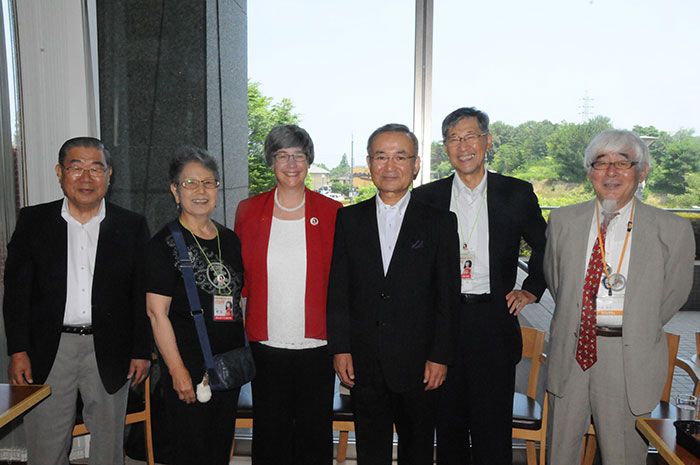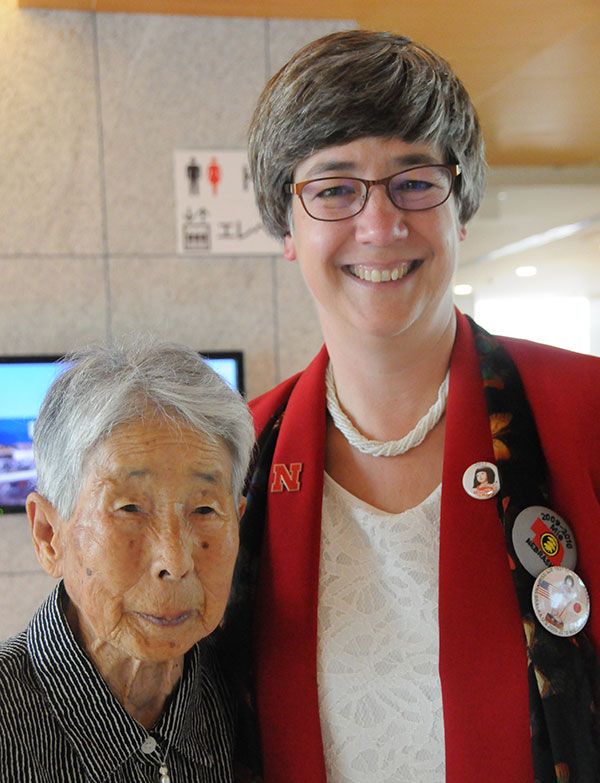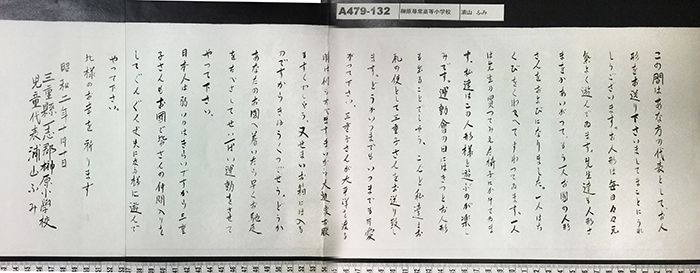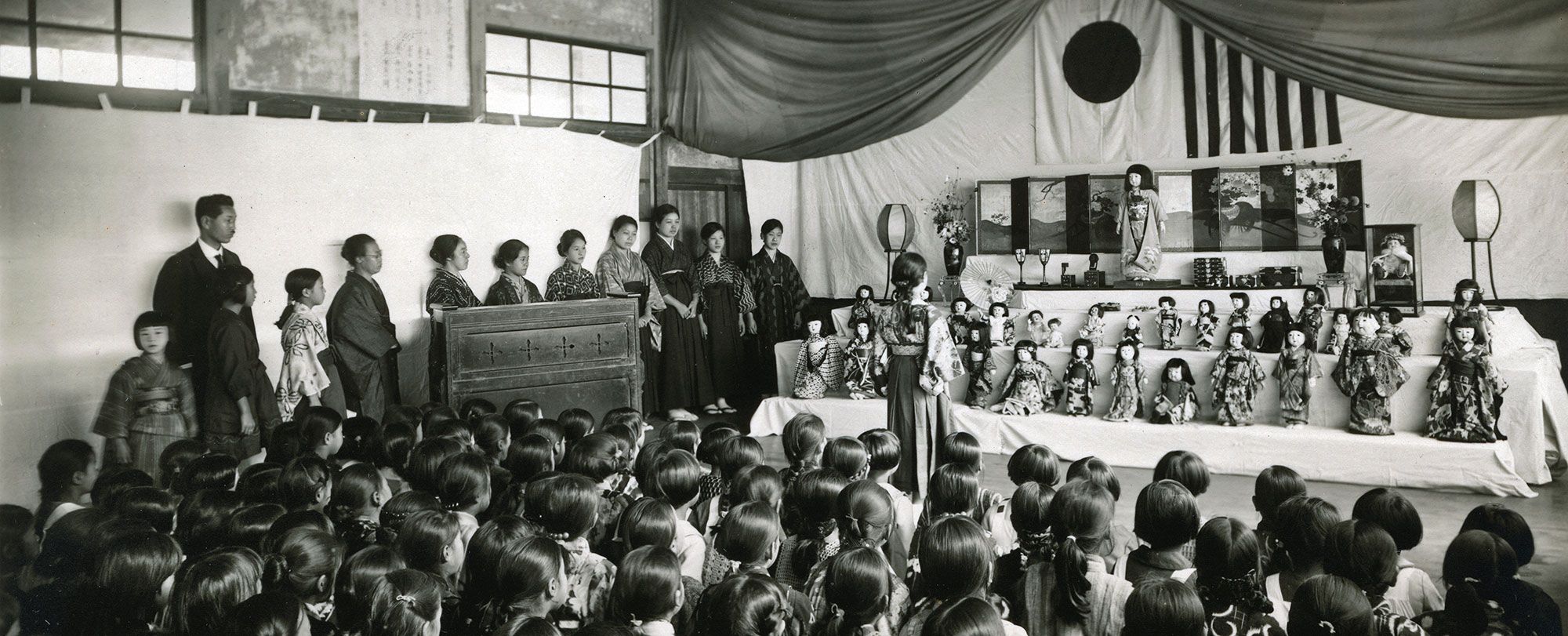
Miss Mie: Historic Japanese Friendship Doll
About Miss Mie
Miss Mie has been in the University of Nebraska State Museum's Anthropology collection since 1928, after the historic Friendship Doll exchange took place between the youth of Japan and the United States.
Miss Mie's Journey
The Friendship Doll Mission was created by Dr. Sidney L. Gulick as a way of teaching American children about Japanese culture and Hina Matsuri, the Japanese Doll Festival. In 1927, he led American students in sending 12,000 “blue-eyed” dolls to Japan as messengers of friendship. The successful mission fostered goodwill between school children of both countries and inspired Japan to present its own gift of exquisitely crafted dolls. Japanese school children sent 58 Torei Ningyo (Dolls of Gratitude) or Friendship Dolls to the citizens of the United States. Each doll arrived with a number of accessories including a passport, a steamship ticket, a wooden base with name plaque, lacquered clothing chests, shoes, two pedestal lanterns, a silk parasol, and many hand-written letters from Japanese children.
Small groups of Friendship Dolls traveled to 479 cities throughout the country that year. After the tour, some of the dolls found permanent homes in museums and other institutions throughout the United States, including the State Museum. As World War II began, the dolls were forgotten and not displayed for many years.
Miss Hyogo
When Miss Mie arrived at the State Museum in 1928, a number of photos were included with her collection of accessories. Upon close examination of the photos, State Museum staff realized that the doll they had received was not the "real" Miss Mie. Japanese officials explained that when the dolls reached America, some of them had evidently lost their identities because the dolls and their stands had not been kept together during the exhibition tour. After some investigation, it was discovered that the original Miss Mie is housed at St. Joseph Museum in Missouri. The doll is recognized as Miss Hyogo, despite her origins.
This story is detailed in the article "Miss Miye," I Presume.
Miss Mie's 2009 Homecoming Visit to Japan
As part of an ongoing effort by the State Museum and the citizens of Mie to continue spreading Miss Mie's message of peace, the Friendship Doll exchange was rekindled. In 2008, the 80th anniversary of the doll's arrival in Nebraska, the Japanese Miss Mie Homecoming Committee delegation from Tsu City in the Mie Prefecture visited Lincoln to view the doll, her accessories, and over 150 letters written by children that accompanied the doll in 1927.
In July 2009, Collections Assistant Susan Curtis escorted Miss Mie, along with her accessories and letters to Mie Prefecture in south-central Japan. Upon Miss Mie's arrival, Mr. Masaru Aoki, expert doll conservator from the historic Yoshitoku Company in Tokyo, assessed her condition and made repairs to her delicate complexion. After the conservation work, Miss Mie was the center of several homecoming events in 10 cities throughout the region, including visits to the Governor of Mie Prefecture and various schools, and exhibitions in Mikimoto Pearl Museum and Tsu Matsubishi department store. Over 30,000 people visited the Miss Mie exhibitions before the doll's return to Nebraska in May 2010.
Miss Mie returns to Japan in 2017
In partnership with the University of Nebraska Kawasaki Reading Room’s 25th anniversary, Lincoln based Morio USA, Nebraska State Historical Society, and with support of the Nebraska Arts Council and the Nebraska Cultural Endowment, the University of Nebraska State Museum temporarily displayed Miss Mie and her accessories again in Morrill Hall in 2017 after her visit to Japan for conservation and display.
It is an honor to display Miss Mie, who remains a symbol of enduring kindness and optimism in the hearts of our children, and the special friendship that began many years ago.






